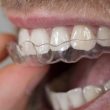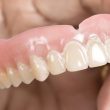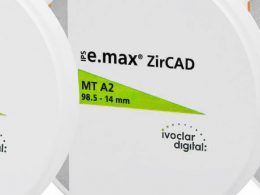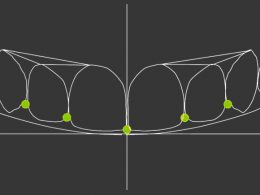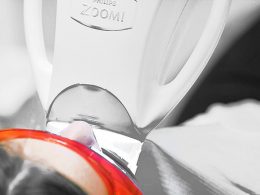Table of Contents
The personal beauty canon of our days is based on appearing youthful and seeks that the body looks athletic and lean, with little body fat, a face with smooth and wrinkle-free skin, lush hair, and of course; A Perfect Smile!
These demands drive people (both men and women) to consult and demand almost compulsively Cosmetic Dental and/or Restorative Dentistry treatments.
And of course that there is nothing wrong with any individual wanting to look and feel good, and that even, seeking to improve their social, sentimental and employment possibilities by taking care of their image and appearance.
That is why the concept of “Smile Design” gains every day more strength and validity in Western societies, however, the great majorities are still unaware of it and do not even know (with certainty) what it is about and what possibilities it offers.
By reading the following lines you will easily understand why resin veneers are a real fiasco, why handmade porcelain restorations are still a good option, and of course also, how famous actresses and models manage to show off those spectacular smiles that simply seem from another planet.
Let us get to work then!
What Is a Smile Design?
In essence, a Smile Design is nothing more than a study and digital simulation (done on dental photographs and facial records) that seeks to determine what changes would be favorable, from an aesthetic point of view, to improve the appearance of a person’s teeth when speak, gesticulate or smile.

– Smile Design is a complex activity, and it must always be executed with a multidisciplinary approach and the participation of several Specialists –
The Smile Design, technically speaking, is a model or digital mock-up, a virtual (computerized) planning of an odontoesthetic treatment.
Then, the clinical procedures necessary to make this digital prototype a reality are part of another story. Still, for most patients, some professionals, and large marketing agencies; are encompassed within the same concept.
What Dental Treatments Does It Contemplate?
In principle… everyone and anyone!
A simple dental cleaning, the removal and restoration of any visible tooth decay and the release of stains and pigments accumulated in the teeth; are commonly an integral part of the approach to any smile.
So that the procedures or treatments necessary to complete a design, will vary widely depending on the clinical case and patient expectations.
While in some people just doing a recontouring and teeth whitening will be enough, in others it will be necessary to correct the position of the teeth with Orthodontics, and even, of the jaws with Maxillofacial Surgery.
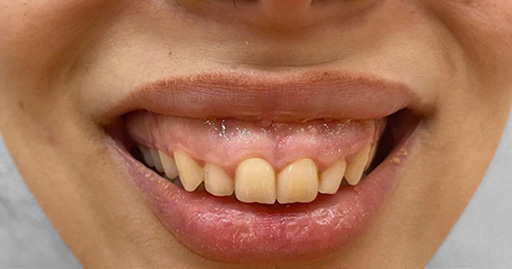
– The surgical correction of some skeletal alterations, such as the vertical excess of the upper jaw (VME), can be part of a Smile Design –
The range of possibilities is truly immense when it comes to correcting and improving the appearance of a smile.
However, one of the most frequent treatments and generally contemplated within the process, is the confection of veneers to modify the shape, size, color and texture of the teeth.
Dental Veneers
Dental veneers or facets are direct restorations made of composite, or better yet, thin sheets of porcelain that are adhered exclusively to the anterior surface or vestibular face of the teeth to improve their aspect or appearance.
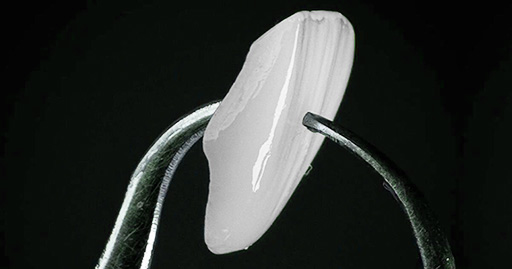
– Fronto-proximal view of a ceramic veneer –
As a general rule, they are used to correct teeth that are fractured, stained, slightly misaligned, worn, separated, malformed, or that they are simply not pleasing to the eye according to the patient’s appreciation. The need for “permanent whitening” is also a relatively frequent indication.
So the veneers can be made of resin or porcelain.
Dental resins or composites are malleable and tooth-colored materials that can be manipulated and applied directly by the Dentist in consultation. Its main components are some derivatives of methacrylic acid, fused quartz, silicates and milled glass particles.

– Porcelain veneers fabricated under the IPS e.max® system (ivoclar-vivadent) –
Modern dental ceramics or porcelains are basically made up of metal oxides (mainly zirconium and lithium) which, alone or in combination, are sintered at high temperatures to obtain a solid structure, without pores and with high mechanical resistance.
Resin and porcelain are two completely different materials in origin and composition, and they have nothing to do with one another. Submitting them to comparison would be like looking for differences and similarities between plastic and ivory, just to cite a metaphorical example.

Let us see below the three ways that exist to make dental veneers:
- By Direct Application of Composite Resin 😔
- With Porcelain Under the Conventional Method 👍
- With CAD/CAM Robotic Technology 💯
Smile Design with Resin or Composite Veneers
It is the one that the Dentist performs directly in the mouth by adhering layers of photopolymerizable composite resin on the teeth.
In our opinion it represents a popular, empirical, cheap and temporary degradation of the treatment, since it is generally carried out freehand and in a single session, without any type of prior planning (neither photos nor digital simulation) and with materials of high porosity and very little resistance.
Being objective we must then clarify that, done in this way, it is not a true Smile Design. It would only be a simple exercise in the most traditional Dentistry, that of a lifetime, that of more than 40 years ago…
If the professional is very skilled (and the patient undemanding), the results could be acceptable in some cases, however, after a few months they will surely fade away due to pigmentation, wear and fracture of the material.

– Typical aspect of a resin veneers –
Veneers made of resin can never look truly spectacular because:
- It is literally impossible, for any human being, to accurately reproduce the complex and delicate morphology of a natural tooth, let alone in the mouth, with speed and a material in a plastic state that is difficult to manipulate.
- The resin is porous, reflects little light and projects limited surface gloss.
- For being porous, the resin is also very permeable and susceptible to the accumulation of stains and exogenous pigments.
- For being a polymeric compound, resin is relatively brittle and very prone to frictional wear and fracture.
- Because simply… resin is a material that was created more than 60 years ago to treat cavities and make small repairs, not to rebuild teeth and let alone entire smiles.
Unlike porcelain, and for the last reasons stated, the initial appearance of resin restorations is little stable and quickly yields before the demands and requirements of the oral function.
Saving some that other exception, we do not recommend it to any of our patients, since in addition to irreversibly damaging the dental enamel (it is necessary to etch it with acid in all its extension), the resin technique creates significant overcontours that accumulate bacterial plaque and predispose to Periodontal Disease.
Please be assured that neither the smile of any celebrity, nor any of the stunning smiles you see on the internet, were created with this material. Do not be fooled by anyone!

– Never bite this type of fish hook. If you do… you will regret it for the rest of your life! –
If you use Instagram frequently, you will have seen “incredible” deals abound, and for prices that truly seem like of “bargain”. Please, avoid being easy prey to professional malpractice!
In the end, it is better to have healthy and ugly teeth than sick gums and equally ugly teeth. Do not fall into the trap out of naivety and lack of knowledge!
And in case of doubt, simply look for information in other sources, but above all, appeal to your common sense so that you are convinced that it is “materially impossible” that a true High Aesthetic Dental treatment costs almost the same as an article of clothing or a pair of sports shoes.
Well yes, that is right… two and two, equals four!
Smile Design with Porcelain Veneers
Porcelain veneers are the quintessential option to modify the size, shape, color and texture of the teeth.
Ceramics or porcelains are worked very calmly in the laboratory and fired in special ovens at very high temperatures, which generates structures with extraordinary physical and mechanical properties, with a smooth and polished surface (without pores or cracks) and with a visual appearance almost identical to that of a natural tooth.
Zirconium Oxide (ZrO2) and Lithium Disilicate (Li2Si2O5) are the two most widely used types of dental porcelain today. Get to know the Kindnesses of Our IPS e.max® Ceramic System.
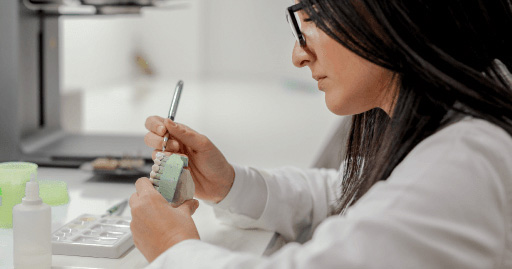
– Ceramist modeling conventional porcelain veneers, with a lot of patience, dedication and the skill acquired in years of experience –
Although they be made using the conventional or pressing method, in which deprives the dental technician’s ability to sculpt the veneers with his own hands based on a previous pattern made of wax, the results are usually very satisfactory.
Currently, the value of each ceramic veneer, made by an aesthetic Dentist and an experienced dental technician (a true sculptor), is around $500 US dollars and offers a longevity of between 10 and 20 years.
Digital Smile Design (CAD/CAM Technology)
It represents the evolution and computerized perfectioning of the procedure.
In general terms, CAD/CAM technology is used in many fields of industrial activity, and consists of the design and automated manufacturing of parts through operating systems, algorithms, and databases that directly operate and control production machinery.
For some years now, this technology has been applied in Dentistry for the elaboration of prostheses and other devices, and of course, application it was also found in Dental Aesthetics and Smile Design treatments.
It is so that under this protocol, except to prepare the teeth, manipulate equipment, kilns and computers, refine structures and give some that other finishing touch; the human does not intervene.
To begin with, digital photographs of the patient’s face, smile and teeth are taken. On them, the desired changes are simulated with a professional software for image processing and a digital mock-up is made so that the person can view and approve the suggested final result.
Once the design is defined, a guide is created for the carving and preparation of the teeth. Once the procedure is completed by the treating Dentist, digital impressions of the mouth are taken with an intraoral scanner and sent to the laboratory via the internet.
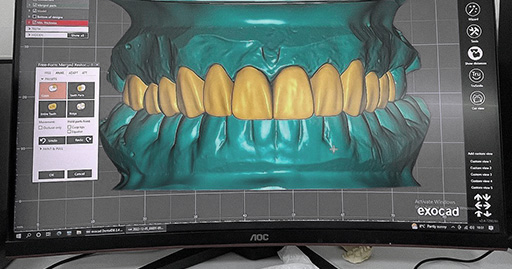
– Exocad® is an innovative computer program that allows us to design veneers that are “bordering on perfection” –
There, the technicians replicate the agreed design and create the digital restorations with a software called Exocad® DentalCAD (Align Technology) that generates STL (3D) files to be transferred to a CAD/CAM milling machine that automatically carves the veneers from prefabricated and precrystallized vitroceramic blocks of Lithium Disilicate.
Finally, only dye-stuffs, additional characterizations of color (makeup) and surface shine (glazing) are applied manually.
The IPS e.max® CAD ingot system offers a great flexibility through its extraordinary variety of colors. In addition, they are available in different degrees of opacity/translucency, so that the expert professional can “naturalize” his creations by regulating the passage, refraction and reflection of light.
The results are truly unbeatable with this technology, very close to perfection and capable of impressing even the most demanding.
This is how the so-called “Hollywood Smiles“ are created, those of artists, misses, models and other personalities of social life.

– About blocks or ingots like this, is that the milling robot automatically carves the veneers –
Its only drawback would be the cost, since due to its high degree of technological demand (software licenses, intraoral scanners, high-performance computer equipment, milling robots and exclusive porcelain presentations for automated machinery), it is usually a type of treatment that is out of reach for many people.
Exocad® DentalCAD: The Jar Lid
Exocad® is a Computer-Aided Design (CAD) software specially developed for the creation and 3D modeling of structures in Dentistry. With the program you can make veneers, crowns, fixed bridges, surgical guides for implants and orthodontic aligners; among others.
The main advantage of CAD/CAM technology in Smile Design is that it allows professionals to work under a completely predictable, simulable and reproducible environment.
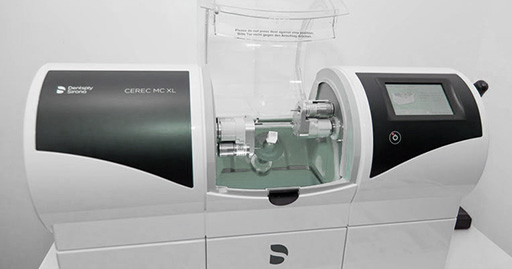
– CEREC CAD/CAM milling machine, from the commercial house Dentsply Sirona –
With Exocad® your veneers are designed on a computer and produced by a robot. This allows the results you want, those you saw and agreed with your Dentist in treatment planning, to be 100% accurate, something unthinkable to achieve without the use of digital technology.
In addition, the program has a large number of templates or libraries that took many years to create, which automatically apply the precepts of the Divine Proportion and the anatomical characteristics of the most beautiful and attractive teeth in the world to the restorations, of course, in absolute harmony with the age, sex, race and personality of the patient (visagism).
Congratulations!
🏅If you have come this far, it is because you are a true candidate for Smile Design. Please keep reading… the second part of this post is not wasted either!
–
The 6 Basic Steps in CAD/CAM Technology
To help you understand with greater facility what a digital workflow with CAD/CAM technology for the Smile Design is like and consists of, we have prepared the following sequence of descriptive images:
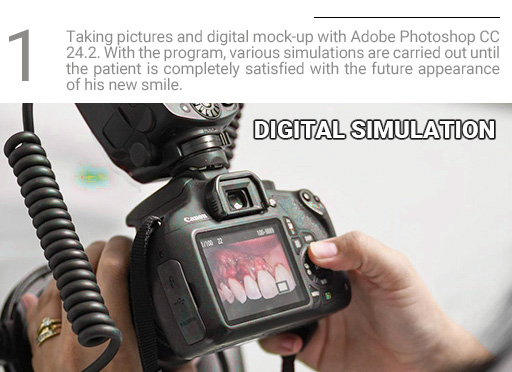
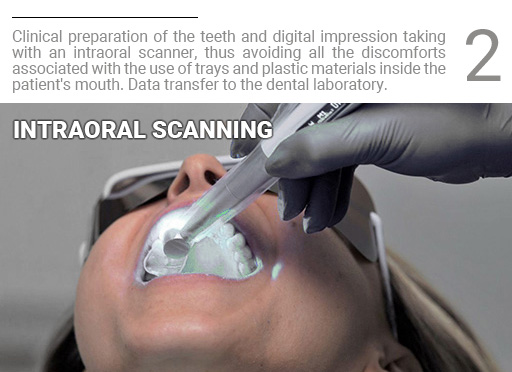
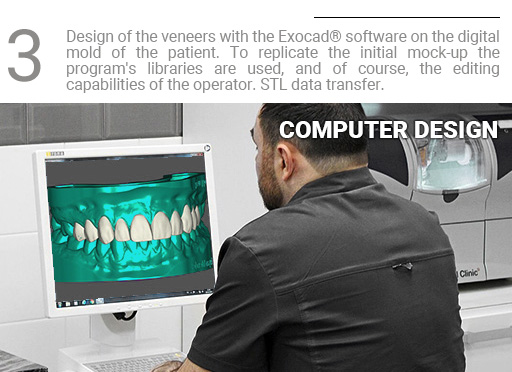
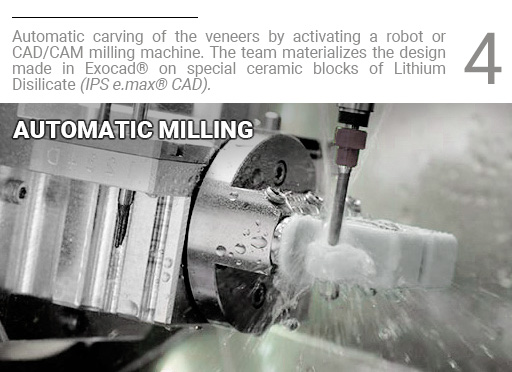

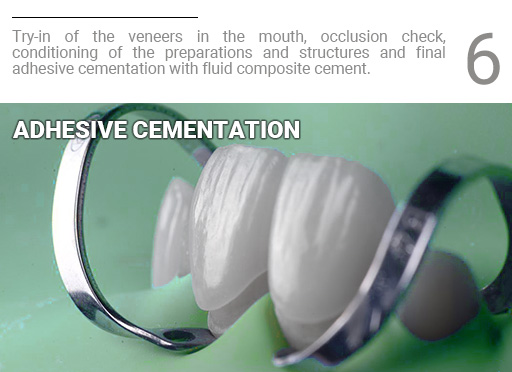
Without a doubt, and as you can infer, this technology raised Aesthetic Dentistry to another level. Before everything was “uncertain and subjective”, now everything is “precise and objective”.
The Two Big Lies About Dental Veneers…
Perhaps for marketing reasons (we could not find another one), they are repeated over and over again, generating confusion and false expectations in people. As an esteemed colleague would cry: “God… I wish patients could attend Dentistry congresses…”
- “Resin Veneers Do Not Damage Teeth” Totally false, since to remove them it is also necessary to remove part of the dental enamel, irreversibly altering the contours and natural shine of the teeth.
- “We Make Your Veneers Without Dental Wear” False in the vast majority of cases, except in a few exceptions, in which the anomaly to be corrected be due to alterations by defect, when there is little or limited amount of dental structure.
If the size and volume of the teeth to be treated are normal or excessive, inevitably it will be necessary to make carvings and wear, so that the veneers (even the so-called “ceramic lenses”) can have an adequate thickness (between 0.5 and 1.5 mm) that guarantees their mechanical performance, and also, provides them with the property of masking background cosmetic defects.
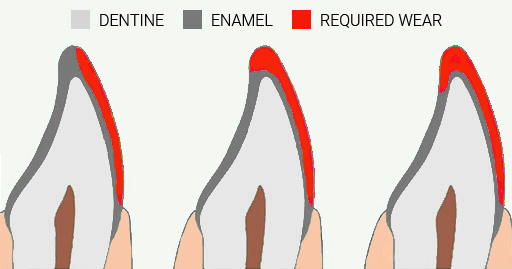
– Schematization of the main types of dental preparation for porcelain veneers –
If the wear is nil or insufficient, overcontours and steps will be created, which in the long run, will put your health at risk and cause you a very high predisposition to periodontal disease (as happens with resin veneers).
Gingivoplasty
Because gums are important too!
Keep in mind that they are also shown when smiling and it is essential that they look healthy, outlined and in perfect harmony with teeth and restorations.
The vast majority of patients need, before making veneers if applicable, undergo Periodontal Plastic Surgery treatments (gingivoplasty) to correct the position, shape, contour, thickness and appearance of their gums.
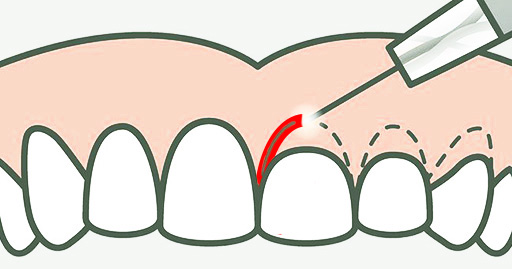
– In many cases, simply removing excess gum tissue, completely changes the “look and feel” of the smile –
To achieve a truly professional result in any design, it is essential to always take into consideration the two anatomical entities that surround the teeth: lips and gums.
Cheiloplasty
Cheiloplasty or lip surgery is a relatively simple aesthetic intervention that provides the lips with the volume and sensuality necessary to beautify and rejuvenate the face and smile. It is a minimally invasive intervention that is always performed under local anesthesia and lasts an average of 30 minutes.
This treatment can be applied to increase or decrease the volume of the lips, or well, to correct congenital and/or acquired anatomical abnormalities.

– Could anyone question the importance of the lips in a “Perfect Smile”? –
In some people, cheiloplasty may be the ideal complement to a Smile Design. It does not hurt to say that it should always be performed by an experienced Plastic Surgeon, and preferably specialized in reconstructive microsurgery.
Other Aesthetic Treatments
As we mentioned before, with or without veneers, a Smile Design can encompass a wide variety of clinical procedures.
Here are the most important ones:
- Orthognathic Surgery To correct dentofacial deformities, and very frequently, the vertical excess of the maxilla (VME), which causes lip incompetence and gummy smile.
- Orthodontics To align the teeth, distribute spaces, correct the bite and mold the shape of the arches.
- Dental Implants and Prosthodontics To replace missing, lost or poor prognosis teeth.
- Teeth Whitening To lighten the color (hue, lightness and saturation) of natural teeth.
- Aesthetic Recontouring Carving and grinding of small surfaces and proximal angles to improve the shape, size and proportion of incisors, canines and premolars.
- Orofacial Harmonization Application of laser therapy, botox, filling materials, bioliftings, tension threads, biostimulant substances and/or recombinant enzymes as a direct complement to the dispensed dental treatment.
On the Way to the Perfect Smile!
To achieve a “Perfect Smile”, it is necessary that you, as an enthusiastic aspirant to it, understand and assume some considerations:
1 The first one of them is that unfortunately there are no magic, immediate and even less “cheap” solutions for major requirement. The improvised, arbitrary and indiscriminate application of resin on your teeth will never be able to provide the desired result, and it will also have a high cost for your oral-dental health.
2 The second is to be clear that porcelain structures (vitreous ceramic) are the only restorations that can truly mimic the appearance of a natural tooth. Porcelain is an infinitely superior material that projects shine and luminosity, does not wear, stain or change its appearance over time.
3 And third… that if your expectations and aesthetic demands are maximum, there is no other way than that of digital Dentistry. The degree of perfection that CAD/CAM machines achieve in these tasks, is not even close to comparable to the manual work that a human being can do. So clear and simple!
But as to sample a button, we present below some recent cases in which we have overcome the challenge of “reviving” some smiles. In them… “we tear down resin” and “we design with e.max®”…
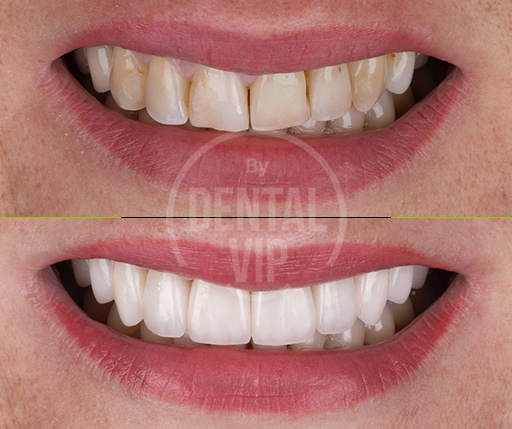

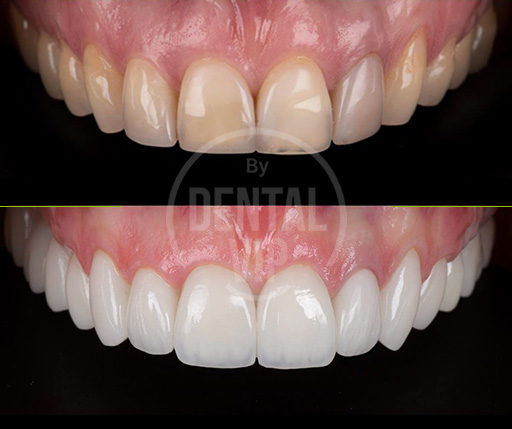

So if you are decided to transform your smile with veneers, you must have sufficient financial resources to work with porcelain, and furthermore, be aware that the treatment is irreversible, that it requires a certain degree of dental wear and implies a lifetime commitment with the maintenance and eventual replacement of your restorations; once they have reached their average longevity.
If this is not the case, it is preferable that you keep your teeth healthy and intact, although aesthetically they be not to your total liking.
ZirO2 Dental Lab: A Luxury Digital Partner
At DENTAL VIP we have the fortune and privilege of working directly with one of the most recognized and exclusive dental labs in Latin America: ZirO2 Laboratorio Dental.
That guarantees a digital workflow always based on the latest technologies and the knowledge of dental technicians trained abroad.

In addition, in our clinic your aesthetic demands will be evaluated by different Specialists, in order to offer you the most diverse treatment options, from the simplest and most conservative to the most comprehensive and sophisticated.
Do not wait any longer… visit us in Caracas and show off a VIP smile!


